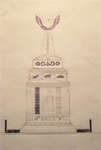"Many Native Languages Face Extinction"
- Full Text
- Many native languages face extinction
OHSWEKEN - I recently read a short report called Indigenous Languages in Canada. It was taken from an article prepared by ethnologist Michael Foster of the National Museum of Man in 1982. According to this report, there are only three native languages that are not in danger of extinction. The three are Cree, Ojibway and Inuktiuk. Inuktiuk is spoken by approximately 16,000 Inuit in Canada and 42,000 in Greenland.
Among the endangered are all six Iroquoian languages spoken by Six Nations Indians. Mohawk is least endangered, with about 2,000 speakers in Canada and another 1,000 in the U.S. Mohawk is spoken on Indian reserves such as Akwesasne, Kahnawake, Tyendinaga and Gibson as well as at Six Nations. Cayuga is next in line with about 360 speakers, mainly here at Six Nations. Only an estimated 10 speakers are left in the U.S.
My mother was fluent in Mohawk and as a boy I grew to love the majestic Mohawk hymns which were sung in four-part harmony. They are now heard only at a few funerals and I think its a shame. If our native languages disappear can we natives be far behind?
In an attempt to do my little bit to keep at least two of our Iroquoian languages alive, I recently unretired and became a materials developer in the native language program. Thus far I have turned a Grade 2 math book from English into Mohawk and likewise a small storybook. I also took a short Cayuga course for adults. Now I can write these same books in Cayuga, after they are translated by someone who is fluent in the language. There is very little language material as yet in either Mohawk or Cayuga.
People are becoming more aware of the danger of losing this part of our heritage. In the fall, Reg and Marge Henry were pleasantly surprised at the overwhelming response to their adult Cayuga class. A proposed single class became four classes, each at various stages of fluency, on the first night. Mohawk College also, very appropriately, offers a course in Mohawk for adults.
Mohawk and Cayuga are taught along with Ojibway and French as second languages in the Six Nations-New Credit school system. Unfortunately, many Indian children do not realize the importance of learning their language. To them it is just another subject to be tolerated. Happily, the immersion schools are a different matter.
I recently visited the Mohawk Immersion School at Martin's Corner. It consists of three classrooms and Mohawk is spoken exclusively. There is a kindergarten class, Grade 1 and Grade 2. Next year Grade 3 will be added. All the subjects - math, science etc. - are taught in the Mohawk language. The concepts necessary to understand these subjects are also taught in Mohawk and thus will not have to be taught over again when the children are phased into English in a later grade.
In about two years, the first group of fluent Mohawk speakers should be graduating from Grade 4. The Cayuga Immersion School at Beaver's Corner is following a similar program.
Writing in Mohawk is not anything new. By the time of the American Revolution more than 200 years ago, a way had been devised to write Mohawk, using the English alphabet. Hymns and parts of the Bible were translated into Mohawk. We can be thankful that our Mohawk ancestors did not have taboos against writing down the language. This may be the reason the Mohawk languasge is not quite as endangered as the rest.
This may be the last generation to hear most of the languages. For example, Onondaga is spoken by fewer than 100 people here and perhaps 50 in the U.S> Oneida has fewer than 200 speakers and they are mostly on the Oneida Reserve, near London, Seneca has about 25 speakers here and another 400 in New York State. Tuscarora has fewer than 10 here and perhaps 40 in the U.S.
A recent poll of Six Nations residents indicated that many would like to see our native languages preserved. It may be too late for some but perhaps we can save a couple for future generations.
- Creator
- Beaver, George, Author
- Media Type
- Newspaper
- Item Types
- Articles
- Clippings
- Description
- "I recently read a short report called Indigenous Languages in Canada. It was taken from an article prepared by ethnologist Michael Foster of the National Museum of Man in 1982. According to this report, there are only three native languages that are not in danger of extinction. The three are Cree, Ojibway and Inuktiuk. Inuktiuk is spoken by approximately 16,000 Inuit in Canada and 42,000 in Greenland."
- Subject(s)
- Personal Name(s)
- Foster, Michael ; Henry, Reg ; Henry, Marge.
- Corporate Name(s)
- National Museum of Man.
- Local identifier
- SNPL002625v00d
- Collection
- Scrapbook #1 by Janet Heaslip
- Language of Item
- English
- Geographic Coverage
-
-
Ontario, Canada
Latitude: 43.06681 Longitude: -80.11635
-
- Creative Commons licence
 [more details]
[more details]- Copyright Statement
- Public domain: Copyright has expired according to Canadian law. No restrictions on use.
- Copyright Holder
- Brantford Expositor
- Contact
- Six Nations Public LibraryEmail:info@snpl.ca
Website:
Agency street/mail address:1679 Chiefswood Rd
PO Box 149
Ohsweken, ON N0A 1M0
519-445-2954




